Intel Shows Off MeeGo Tablet User Experience
by Anand Lal Shimpi on February 14, 2011 6:30 AM EST- Posted in
- Smartphones
- Intel
- MeeGo
- MWC 2011
- Mobile
- Tablets
- Trade Shows
While I was scheduling my Mobile World Congress meetings I got an email request from Intel. It wanted to give me a quick tour of the latest MeeGo UI for tablets. MeeGo, as you may remember, was the combination of Intel's Moblin OS and Nokia's own efforts. While MeeGo isn't completely abandoned by Nokia, it's looking unlikely that Nokia will be a major player in it going forward considering the fresh partnership with Microsoft.
Intel is still trucking away with MeeGo and unfortunately appears to be retaining the less-than-ideal name despite the recent shakeup with its partner (at least Moblin sounded respectable, MeeGo sounds like something you say before using the bathroom).
MeeGo is designed to be a mobile OS that can be used across a wide variety of devices. Cars, netbooks, smartphones, tablets and even TVs are supposed to be built around the totally open OS. Intel hopes that MeeGo will be the truly open alternative to Android. It's a lofty goal to say the least. Google officially introduced Android 3.0 earlier in the month and devices based on it are expected to be shipping in the next couple of months. The version of MeeGo Intel demoed for me however is a meager 1.2. While I know that comparing version numbers isn't the most scientific thing in the world, it's the easiest way for me to point out that MeeGo is no where near the maturity level of Android.
The point of today's demo was to showcase the foundation of MeeGo's tablet user experience. Intel's focus here is multitasking. What Intel wants to do away with is the concept of going back to an app launcher to do something else with your tablet. Instead, Intel believes you should be able to launch apps based on what you're doing. It's a subtle difference, but one that's best described by a screenshot.
This is the MeeGo tablet user experience. The screen is treated as a viewport into an infinitely wide and infinitely tall desktop. You scroll from left to right to view more panels, and up/down to view more information within a panel.
Each panel is grouped according to an overall function. The My Tablet panel includes your top applications as well as device settings for when you absolutely need to do something the old fashioned way. The Friends panel aggregates all of your communications between you and your friends. This could be in the form of tweets, Facebook status updates as well as emails and other messages. Everything appears in this one view. If you tap on any of the items in the view, the associated application will launch (e.g. tap an email you received from one of your friends to fire up the email app).
There are also panels for music, photos and websites.
Intel believes that launching applications to later access data with them is silly and you should instead be presented with the data you want and it should launch any necessary application for you. It's a shift from the app centric model of today's smartphone/tablet OSes to a data centric model. Intel feels that this approach will reduce the number of taps necessary to efficiently multitask, which will obviously encourage heavier usage models and ultimately require faster SoCs to run everything.
If the infinitely wide/tall viewport sounds a lot like Microsoft's Windows Phone 7 UI then you're not alone. The concept seems very similar, although it's not nearly as pretty/polished in MeeGo today. For not supporting full blown multitasking out of the box, Microsoft's WP7 UI is very efficient at moving between apps. If MeeGo can duplicate that efficiency and expand upon it, I'm interested.

Microsoft's Metro UI
The bigger issue I see with MeeGo is the huge disconnect between Intel's aspirations and the current state of affairs. If Android is the target, MeeGo needs to make a great deal of progress in a relatively short period of time. These consumer facing smartphone/tablet OSes have to be ridiculously polished, they need to make mechanical toasters look difficult to use, and MeeGo just isn't there yet.
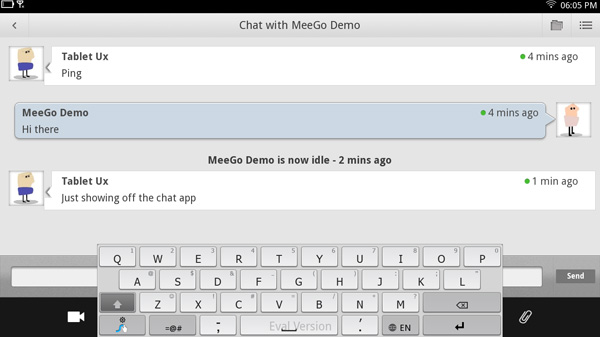
MeeGo currently supports Swype
I like the concept. A truly open OS that allows for infinite customization and supports everything from smartphones and tablets to PCs and TVs. We need unification. The last thing I want is to have a HP tablet that can't run the same apps as my iOS smartphone and my Google TV. Unfortunately for Intel I feel like the deck is stacked against it on this. Intel does an amazing job executing on its microprocessor designs, but its extra curricular activities are rarely met with a similar amount of success.
I'm all for more competition so let's see where MeeGo takes us over the coming years.


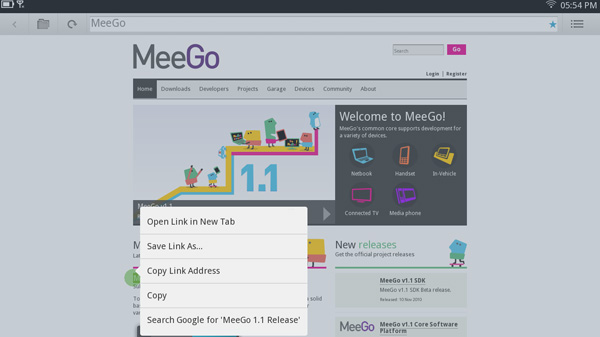
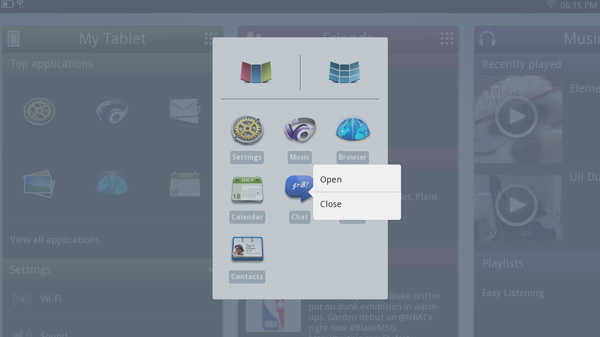
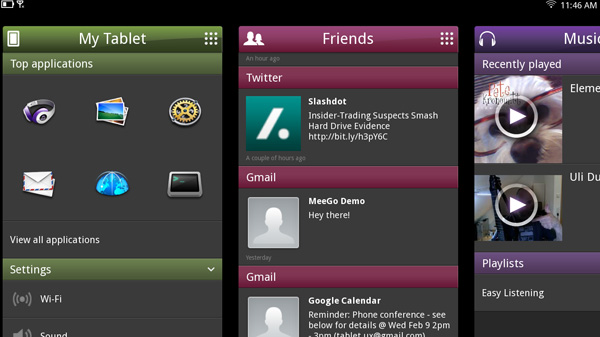
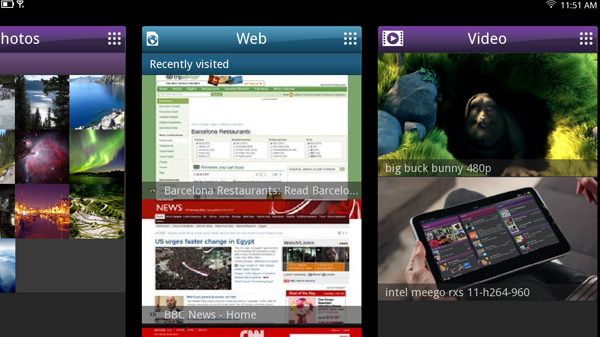
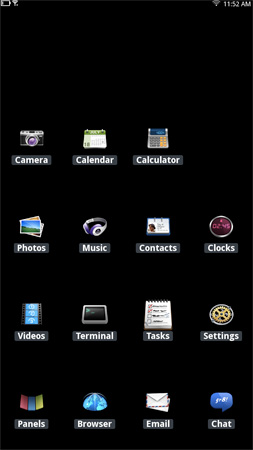
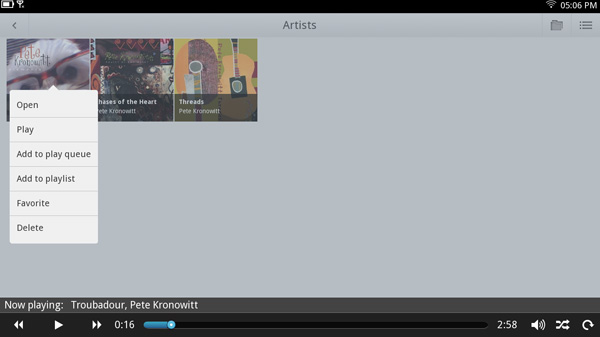
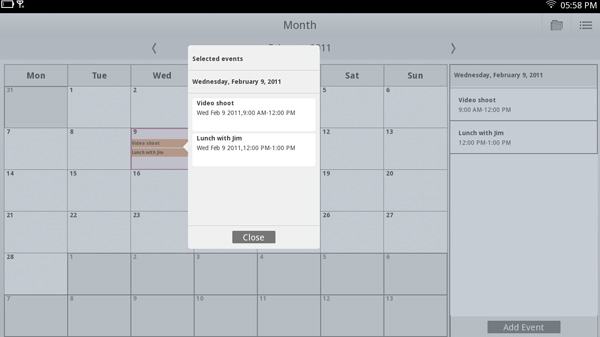
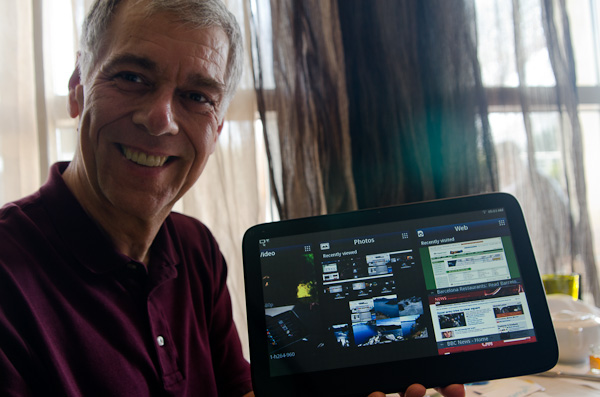








15 Comments
View All Comments
softdrinkviking - Monday, February 14, 2011 - link
I like the idea of the up-down/right-left infinite desktop, and I would like to try it out.I see the similarities with WP7, but I also feel like the MeeGo UI looks way more "open."
vol7ron - Monday, February 14, 2011 - link
This is also how I think the iOS apps should have gone. A vertical and horizontal snap grid.I would have liked to see what the terminal showed and if root would be unlocked to all owners. It would be even nicer if this could run Android apps - that would certainly help their market presence.
sdffds6546 - Tuesday, February 22, 2011 - link
theyve been working on moblin for years now and have gotten almost nowhere. now the biggest developer has dropped out. meego will never make it to the market, it will die a slow death. whats funny is that this was intels way of increasing their market which cut out microsoft and as it turns out, ms is the one that put the final nail in meego's coffin by stripping off nokia. its no tragedy though there are already a few too many os's out thereR3MF - Monday, February 14, 2011 - link
apparently nokia will still be spending around half a billion a year on Meego after the changes, so i'd hope the consumer sees something tangible for all that investment!http://jedibeeftrix.wordpress.com/2011/02/12/nokia...
OBLAMA2009 - Monday, February 14, 2011 - link
theyve been working on moblin for years now and have gotten almost nowhere. now the biggest developer has dropped out. meego will never make it to the market, it will die a slow death. whats funny is that this was intels way of increasing their market which cut out microsoft and as it turns out, ms is the one that put the final nail in meego's coffin by stripping off nokia. its no tragedy though there are already a few too many os's out therename99 - Monday, February 14, 2011 - link
The interesting thing to look for (IMHO) is:will the next Atom FINALLY be the one that says "WTF are we carrying around this baggage from 35 years ago" and ditches everything except 64-bit mode. Not booting in 8086 mode, not 286 weirdness, no SMM stupidity, no 36-bit PAE, no virtual 86 mode, etc etc.
Get rid of all that crap, and have the only compatibility junk be
- 8087
- MMX
- segments
Secondly, put compiler writers and OS vendors on notice that the next major rev will get rid of the the three crud items mentioned above.
If Intel is willing to do this, we'll see that they are serious about taking on ARM.
If, on the other hand, the forces of "it is vitally important that some idiot be able to run a copy of his 1979 CPM programs on Atom" win, well, it'll be clear that waking for Atom to do anything interesting in this space is a waste of time.
lwatcdr - Friday, February 18, 2011 - link
Actually they should add in "clean" 32 bit instructions. Ones that can use the extra registers that 64 bit offers.For programs that do not need more than four gigabytes of memory there are advantages to a 32 bit memory model. Even a 16 bit mode could be useful for tiny programs that need no more than 64k of address space but those are few and far between these days.
But then that is why we have ARM. A quad core A15 ARM cpu is really going to be very interesting.
But with Microsoft talking about Windows on ARM I just have to ask. Why?
There is a lot more Linux, Android/Linux and IOS applications already running on ARM. What do I need Windows for?
That will be as useful as Windows on Mips and Alpha was.
AKA Not at all.
vol7ron - Monday, February 14, 2011 - link
"While I know that comparing version numbers isn't the most scientific thing in the world, it's the easiest way for me to point out that MeeGo is no where near the maturity level of Android."Anand, seriously? You're better than that.
While it may or may not be as mature, that has nothing to do with the version number. Every project has its own versioning system - some go 10^n decimals for rollouts. Not to mention that, even if they tracked their versions the same as Android, their base version could have been vastly superior. For instance, they could have started with Android 3, improved on it and called it MeeGo 1.0
I'm not even sure how Intel/Moblin accounts for their versions. Is it based on time, features, bug fixes, number of updates?
I think the important factor is comparing the feature-set, how long the OS has been made available to the public, and how long Intel has been using it; which all, as you've said, are still immature compared to Android.
nafhan - Monday, February 14, 2011 - link
A comment in the article makes me think this would make an awesome OS for a future Nintendo console: the "MeeGo Wii 2"Sorry...
Calabros - Monday, February 14, 2011 - link
wrong person to demonstrate! you should give the cam to him and yourself play with Meego :-)